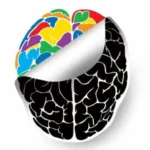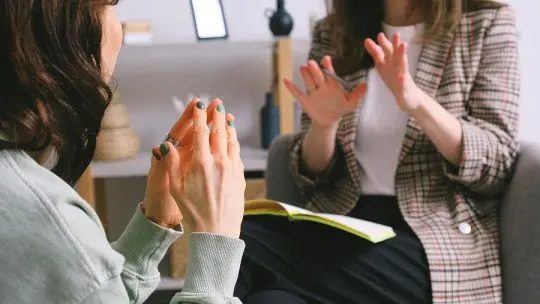
Remembering the different interventions that I have been able to carry out in different workshops and therapeutic processes, specifically those that dealt with the establishment of roles, I want to reflect on the important role that therapeutic listening has, specifically gestalt listening.
Observations and analysis that have given me many conclusions about the role that it maintains in that double direction about the self that every therapist seeks: inward and outward.
Learn more: “Gestalt Therapy: what it is and what principles it is based on”
Clarifying some concepts
Internal listening
The internal listeninglike the ability to question from self-observation, is nothing more than the virtue of looking inward, allowing ourselves to become aware of ourselves and attend to those processes that awaken in established communication.
And it is that although “being available to the other does not mean forgetting about ourselves” (Peñarrubia, 2012), the harsh self-criticism, arising from that “keeping appearances” in therapy – like the attention to the yes in the experiential process – forgets that gestaltists not only pay attention to what happens to others, but must also keep in mind (be aware) of what is happening to them at that very moment (in the here and now).
inner listening
This inner listeningwhich we initially thought was a burden on the patient’s full attention, gives way to a kinder version, exemplifying the excellence of its method as accompaniment, without having to interfere with the attention of our interlocutor.
Paraphrasing JB Enright (1973) we exemplify this new vision and awareness of what is referred to here: “To carry out an ideal clinical task, mental health professionals need to have access to the flow of their inner experience. The first clue and The most subtle way to understand the anguish, the hostility… of the other, is the awareness of some similar or complementary state in oneself.
External listening
As for the external listeningthey forget that more important than listening to what is said, is deciphering how they say it. It is common to observe, then, how listening to verbal content is important (showing our listening capacity once again with the repetition of what we have attended to with maximum fidelity: words and textual themes transmitted), but even more important is listening to the non-verbal content.
And in my experience in group dynamics, although we develop attention and concentration on words and issues, we relegate gestures, tones of voice, and body posture, which, more than words, provide us with more sincere information than their narration in sentences.
Without a doubt, this shows that a good therapist must not only limit himself to passive listening to what is being explained, but also must actively attend to the sound of the voice, its tones, the rhythm of the musicality in its wordsbecause ultimately, verbal communication is nothing more than a lie (Peñarrubia, 2006).
My experience in congruence with the above has allowed me to understand that in addition to listening to the words, we must pay more conscious attention to what the voice tells us, what the movements, posture, facial expression, and psychosomatic language narrate; In short, and in the words of Fritz Perls himself (1974): “it’s all there, if you allow the content of the sentences to only play second fiddle.”
Keys and benefits of therapeutic listening
Therapeutic listening must be attended to as an attitude: availability, attention, interest in the other… If we materialize it in two inseparable operational lines (listening to content and perception of form) we will understand the purpose of the training that every good therapist must attend:
Communication in Gestalt Therapy
We have talked about the attitude of Gestalt listening, which inevitably leads us to also talk about a certain communication attitude (Gestalt communication). It is already common in the workshops, the correction in several colleagues, among whom I am, of forms of expression that distort the rules of communication in Gestalt.
We move on to state and exemplify the most common ones (Peñarrubia, 2006):
Gestalt Therapy and the therapeutic relationship
To conclude and returning to the origins of Gestalt Therapy, we are indebted (either by position or by opposition) to Freud and his psychoanalysis (Rocamora, 2014): “what one relationship damaged in its origin or childhood, another can heal – psychotherapy” , allowing when talking about therapeutic relationship, to detect certain models of patient-therapist relationship. Relationship that when talking about gestalt listening, highlights the peculiarity that in relation to its fundamental principle of “realization”, points to an interaction where the therapist (the self) is used as a map of reference or experience with his patient (balance gestalt).
What attitude should we maintain: “hear? or listen?” If listening is something that is done intentionally and hearing is something independent of will, in Gestalt Therapy the first priority is. This, in congruence with its objective (focused more on processes than content), puts emphasis on what is happening, thinking and feeling in the momentabove what could be or have been. Listening globally, as they show us in the workshop (verbal and non-verbal), is therefore the key to the success of a therapeutic process.








